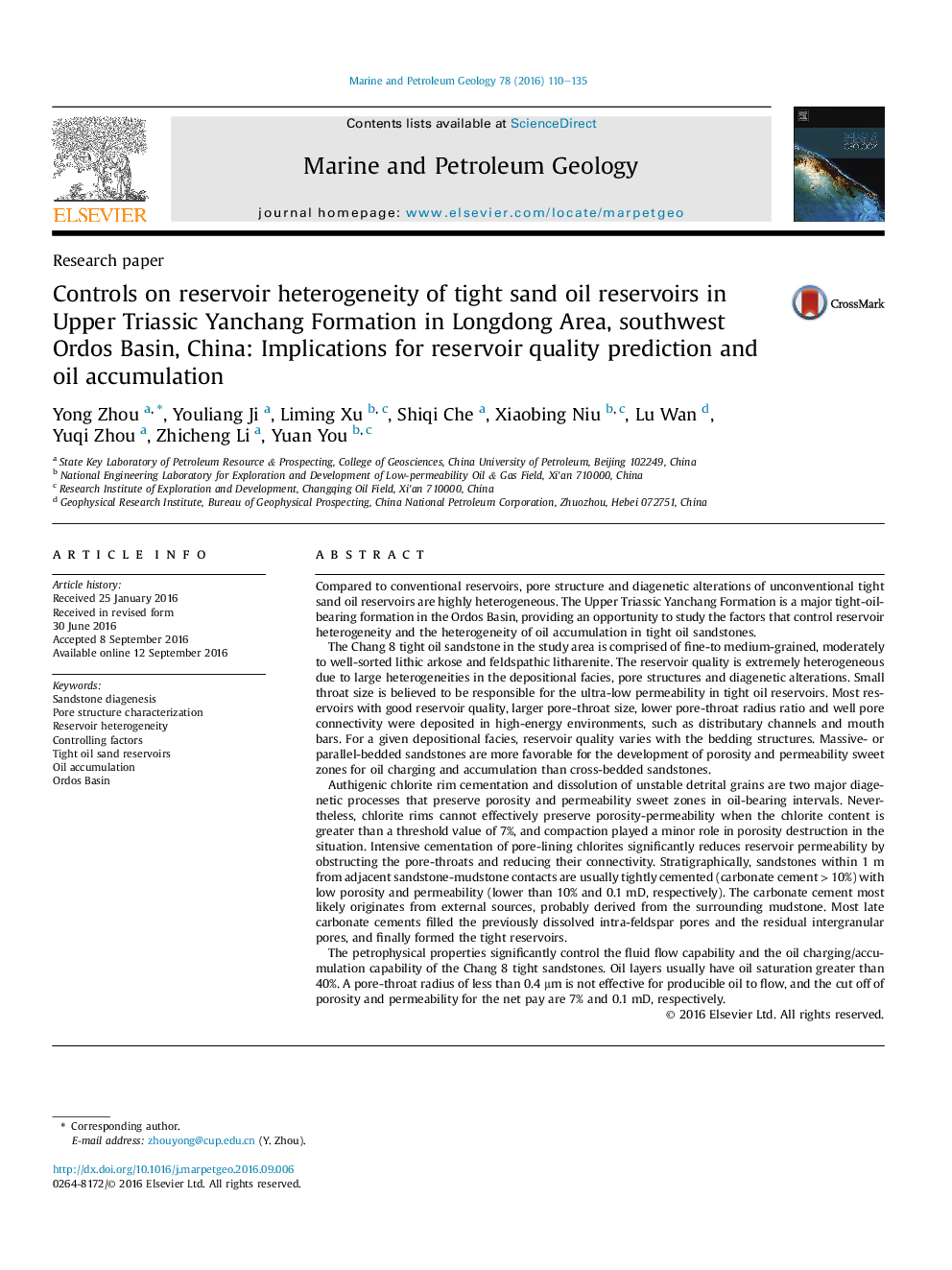| کد مقاله | کد نشریه | سال انتشار | مقاله انگلیسی | نسخه تمام متن |
|---|---|---|---|---|
| 6434375 | 1637149 | 2016 | 26 صفحه PDF | دانلود رایگان |
- Adding methodology used in image analysis in 3D X-ray micro-CT.
- Adding So and Sw data to discuss oil-bearing characteristics.
- Adding new figures and table to support some key conclusions.
- Adding some more detailed papers.
Compared to conventional reservoirs, pore structure and diagenetic alterations of unconventional tight sand oil reservoirs are highly heterogeneous. The Upper Triassic Yanchang Formation is a major tight-oil-bearing formation in the Ordos Basin, providing an opportunity to study the factors that control reservoir heterogeneity and the heterogeneity of oil accumulation in tight oil sandstones.The Chang 8 tight oil sandstone in the study area is comprised of fine-to medium-grained, moderately to well-sorted lithic arkose and feldspathic litharenite. The reservoir quality is extremely heterogeneous due to large heterogeneities in the depositional facies, pore structures and diagenetic alterations. Small throat size is believed to be responsible for the ultra-low permeability in tight oil reservoirs. Most reservoirs with good reservoir quality, larger pore-throat size, lower pore-throat radius ratio and well pore connectivity were deposited in high-energy environments, such as distributary channels and mouth bars. For a given depositional facies, reservoir quality varies with the bedding structures. Massive- or parallel-bedded sandstones are more favorable for the development of porosity and permeability sweet zones for oil charging and accumulation than cross-bedded sandstones.Authigenic chlorite rim cementation and dissolution of unstable detrital grains are two major diagenetic processes that preserve porosity and permeability sweet zones in oil-bearing intervals. Nevertheless, chlorite rims cannot effectively preserve porosity-permeability when the chlorite content is greater than a threshold value of 7%, and compaction played a minor role in porosity destruction in the situation. Intensive cementation of pore-lining chlorites significantly reduces reservoir permeability by obstructing the pore-throats and reducing their connectivity. Stratigraphically, sandstones within 1 m from adjacent sandstone-mudstone contacts are usually tightly cemented (carbonate cement > 10%) with low porosity and permeability (lower than 10% and 0.1 mD, respectively). The carbonate cement most likely originates from external sources, probably derived from the surrounding mudstone. Most late carbonate cements filled the previously dissolved intra-feldspar pores and the residual intergranular pores, and finally formed the tight reservoirs.The petrophysical properties significantly control the fluid flow capability and the oil charging/accumulation capability of the Chang 8 tight sandstones. Oil layers usually have oil saturation greater than 40%. A pore-throat radius of less than 0.4 μm is not effective for producible oil to flow, and the cut off of porosity and permeability for the net pay are 7% and 0.1 mD, respectively.
Journal: Marine and Petroleum Geology - Volume 78, December 2016, Pages 110-135
